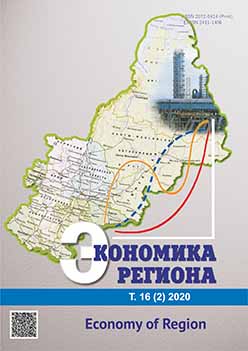ПОТРЕБНОСТЬ РОССИЙСКОЙ ЭКОНОМИКИ В ИНОСТРАННЫХ ТРУДОВЫХ РЕСУРСАХ В УСЛОВИЯХ ВНЕДРЕНИЯ НОВЫХ ТЕХНОЛОГИЙ
Demand of the Russian Economy for Foreign Labour in the Context of New Technologies Implementation
Author(s): Aleksandr Aleksandrovich GrebenyukSubject(s): Economy
Published by: Институт экономики Уральского отделения Российской академии наук
Keywords: new technologies; labour productivity; international labour migration; demand for foreign labour; forecasting; foreign labour; automation; digital society; immigration; consequences
Summary/Abstract: Nowadays, the technological factor plays an increasingly important role in the development of the global labour market. The widespread introduction of automation in the production of goods and services decreases the demand for labour and increases structural unemployment. Undoubtedly, such trends will affect the demand for labour in the Russian labour market. The paper measures the demand of the Russian economy for foreign labour force in the context of innovations, increase in the technological factor, and transition to the digital society. The Russian Federation is a world leader in terms of the total number of foreign workers in the labour market. However, in terms of labour productivity in the national economy, Russia lags far behind developed countries. In this regard, it is necessary to consider how further technological development and growth of labour productivity will influence the demand for external labour force. The statistical analysis of time-series, extrapolation and modelling allowed forecasting the dynamics of gross domestic product (GDP) and the growth of labour productivity until 2030, as well as determining the supply and demand balance in the Russian labour market. The paper demonstrates two prognostic models assuming that the average annual growth rate of the Russian GDP will either remain 2.6 % (the first model) or gradually increase from 2.5 % to 3.5 % (the second model). The research results show that, in the next decade, the demand for foreign labour will significantly decrease. The obtained findings can be used for creating various scenarios for the development of regional labour markets, as well as transformation of regional social and migration policies.
Journal: Экономика региона
- Issue Year: 16/2020
- Issue No: 2
- Page Range: 507-521
- Page Count: 15
- Language: Russian

